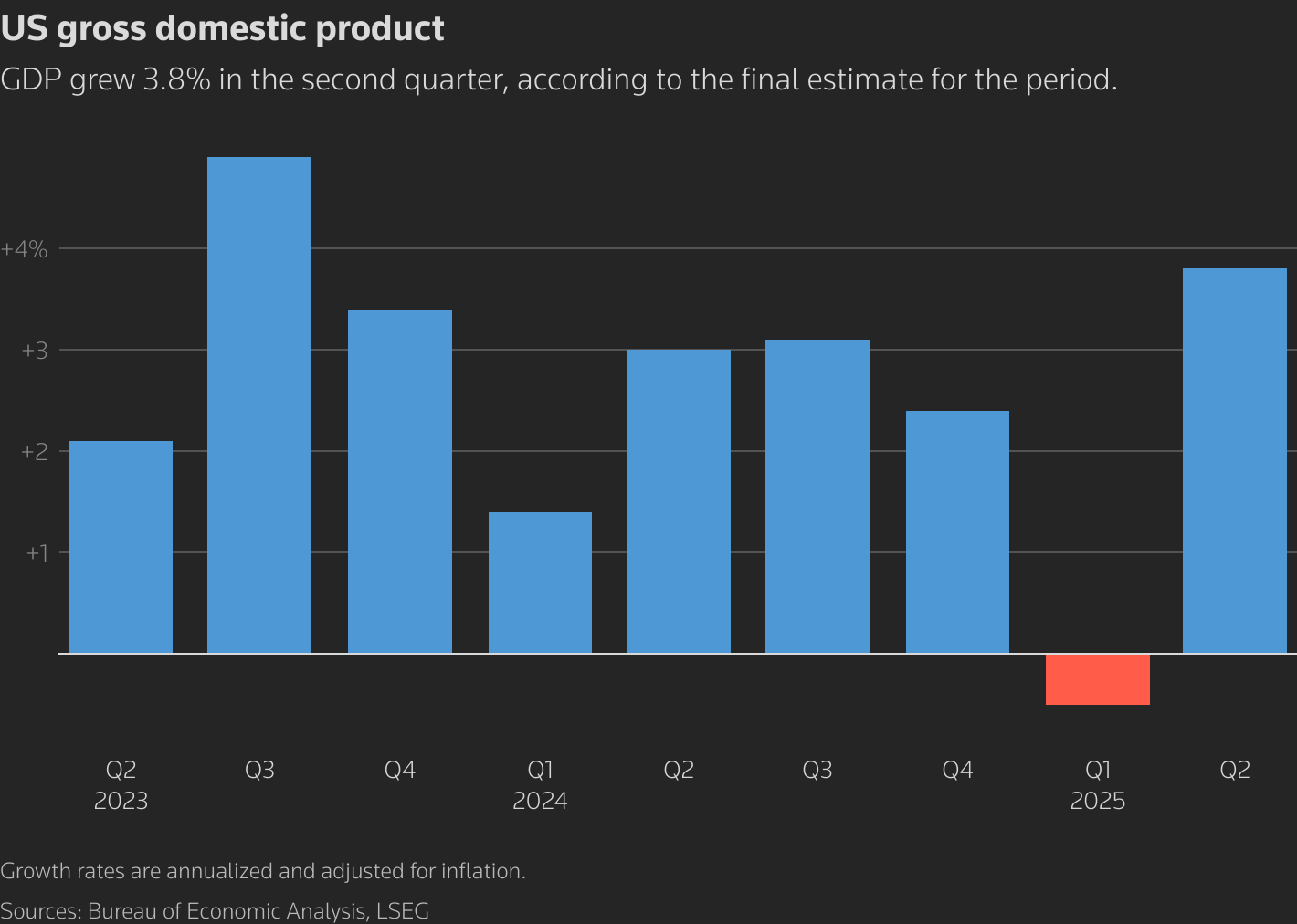Washington — The U.S. economy grew faster in the April–June quarter than previously reported, the Commerce Department said Thursday, in a revision that lifts second-quarter real gross domestic product to an annualized 3.8 percent. That is 0.5 percentage point higher than the prior estimate of 3.3 percent.
The Bureau of Economic Analysis said the upward revision was driven mainly by stronger consumer spending and a smaller-than-previously-estimated drag from imports. Spending on services — including transportation, financial services and insurance — was revised notably higher and helped push growth above earlier estimates.
The revised figures follow a weak start to the year: the first quarter was revised into contraction territory, leaving growth for the first half of 2025 modest overall despite the second-quarter rebound. Economists warned that volatility in trade flows — particularly firms’ shifting import patterns ahead of and after tariff moves — has exaggerated quarter-to-quarter swings in GDP.
Markets reacted to the surprise upgrade. Short-term Treasury yields ticked higher on the news as investors reassessed the outlook for inflation and Federal Reserve policy, while equity markets showed mixed movement amid fresh debate over whether the economy needs further policy support. Some analysts said the revision complicates bets on how quickly the Fed might ease monetary policy.
Policy makers and forecasters urged caution in reading too much into a single quarterly revision. While the stronger Q2 number eases concerns about a prolonged slowdown, many economists pointed to underlying weakness elsewhere in the data — including signs of slowing investment and the earlier Q1 contraction — and stressed the need for more consistent momentum before declaring a broad recovery.
The BEA’s final estimate of second-quarter GDP also showed revisions to price measures: the personal consumption expenditures (PCE) price index — the Fed’s preferred inflation gauge — rose modestly in the quarter, and the so-called core PCE was revised slightly higher. Analysts said policymakers will weigh those price readings along with labor market strength in deciding the timing and size of future rate moves.










